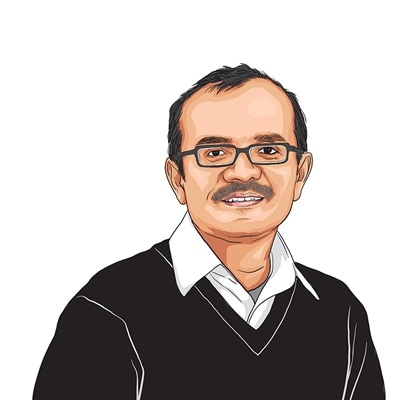Opinion Lessons in how to build an innovation ecosystem
Communities are crucial to the success of such initiatives by the government
 Karnataka, Andhra Pradesh and Jammu and Kashmir are trying an idea called ATL Sarthi. Sarthi means a charioteer. The idea is to create clusters of existing ATLs overseen by a guidance committee involving students, teachers, principals and mentors. (Representational Photo)
Karnataka, Andhra Pradesh and Jammu and Kashmir are trying an idea called ATL Sarthi. Sarthi means a charioteer. The idea is to create clusters of existing ATLs overseen by a guidance committee involving students, teachers, principals and mentors. (Representational Photo)
Do you think Mohan from Swades or Bhuvan from Lagaan would have been able to sell a dream if there were not enough people to believe them? Would these films have made the same impact on viewers if it were one protagonist and not a community striving? In a land of 142.86 crore people, for any initiative to be successful, it is important for communities to own interventions meant for them. Fortunately, India is a champion of community-led movements.
We know the inspiring story of Amul, the community-based dairy cooperative society. Its success, which made India the world’s largest milk producer, lies in building a strong community-based value chain. At the heart of Amul is rural communities who came together to produce and market their products.
Does this pattern apply to building an innovation ecosystem? Yes. India’s jump to the 40th rank in the Global Innovation Index (GII) — from 81 in 2015 — is not an accident. It is a testament to the public and private commitment, led by the Centre’s push on aspects such as liberating innovation and entrepreneurship and innovation from the web of complex processes. It creates institutional mechanisms to promote innovation and nurtures young minds to become entrepreneurs.
Can we keep rising on the GII and strengthening our innovation ecosystem merely through top-down efforts? Perhaps not. Let’s take the Atal Tinkering Labs (ATLs). They are innovation labs or “maker spaces” established in middle and high schools with the aim of cultivating one million children as “neoteric innovators” — those who keep pace with the rapidly changing world of technology to solve relevant problems. These labs are established under the Niti Aayog’s Atal Innovation Mission. The initiative aspires to instil in young minds the curiosity, creativity, and adaptive learning required to become entrepreneurs. So far, 10,000 ATLs have been established over six years engaging more than 75 lakh students.
But how does one ensure that such infrastructure remains efficient and evolving?
ATL-like maker spaces worldwide face the challenge of uniform and effective utilisation. Imagine this: When a 3D printer in a school breaks down, would it be easier to fix if the school is in Delhi or West Champaran in Bihar? On average, it is the city lab that is easier to operate and maintain. This is a problem for ATLs because 60 per cent of the 10,000 labs are in rural areas. How do we ensure such infrastructure serves our students effectively? Enter, the idea of building cooperatives of ATLs.
Karnataka, Andhra Pradesh and Jammu and Kashmir are trying an idea called ATL Sarthi. Sarthi means a charioteer. The idea is to create clusters of existing ATLs overseen by a guidance committee involving students, teachers, principals and mentors. They are responsible for making ATLs in their region and facilitating access to tinkering for schools.
In a cluster, there are 20-30 schools with ATLs, where typically two-thirds are performing well but one-third may be struggling. The ATL Sarthi experiment shows that by coming together as a cluster, where exemplary mentors help with both processes and learning, more than 90 per cent of schools demonstrate high teacher and student attendance, and more than 85 per cent begin to perform well.
Implementing ATL Sarthi comes with its fair share of challenges. It calls for a mindset shift, one where schools own the infrastructure created for them by the taxpayer. Doing so will require embracing community participation by sharing power, fostering dialogue and providing resources. It has driven home the timeless lesson we keep learning in the development sector — even though the government launches numerous initiatives, these efforts can only go so far. To truly unlock their maximum potential, it’s crucial for communities to take ownership, no matter how modern the topic. This is when our nation will repeat the success of Green and White Revolutions in the age of innovations emerging from schools to startups.
Vaishnav is Mission Director, Misra is Young Professional and Gupta is Innovation Lead for Atal Innovation Mission (AIM), NITI Aayog






